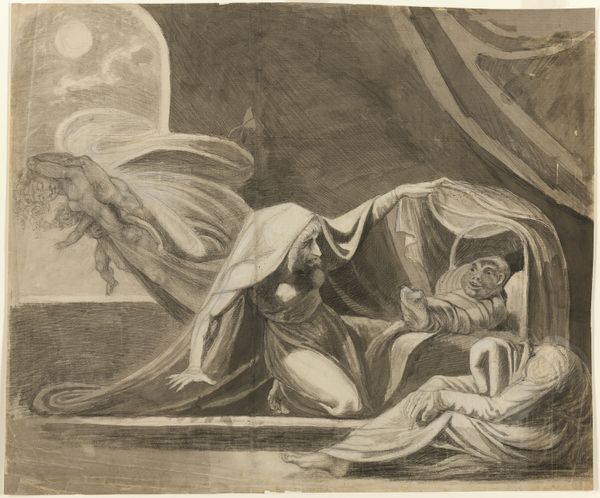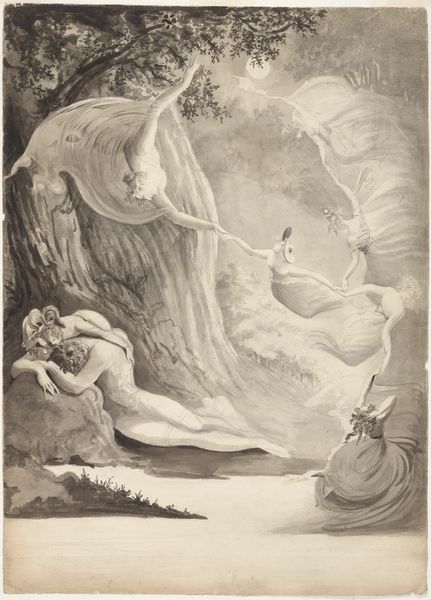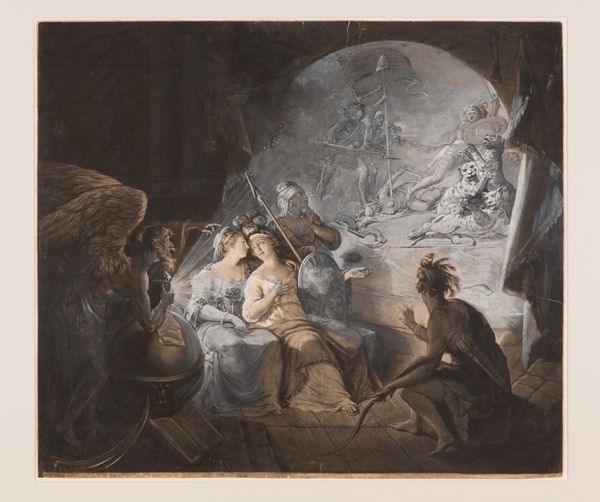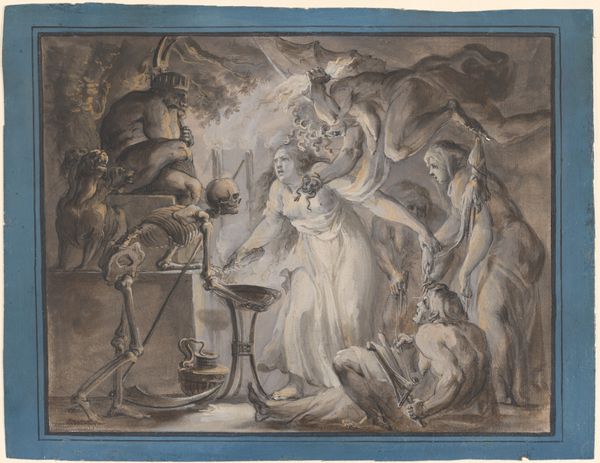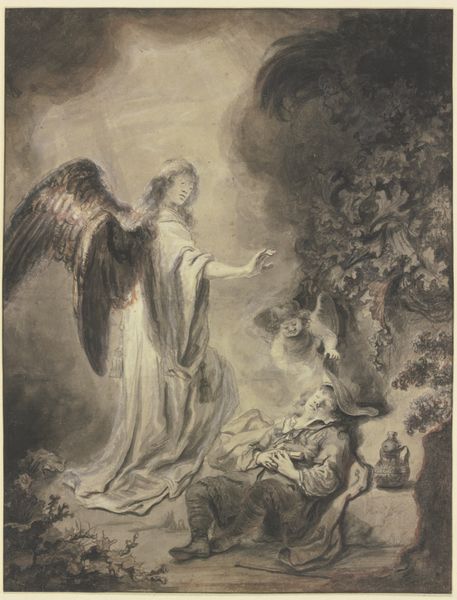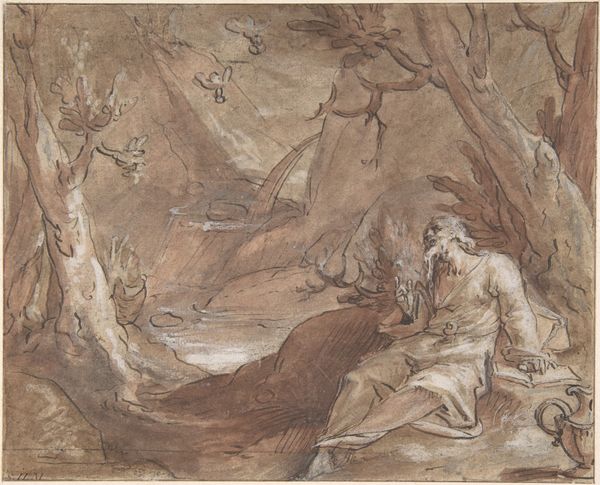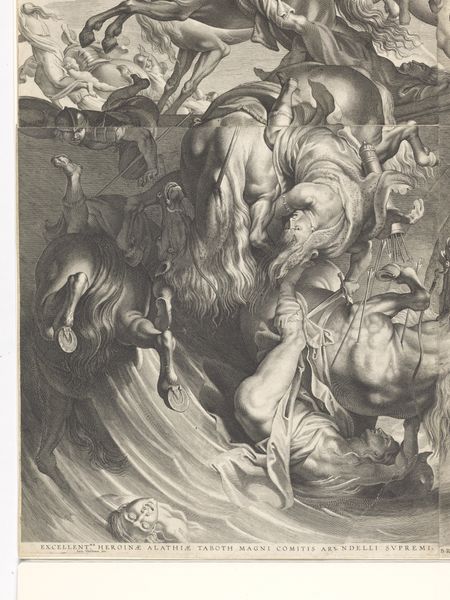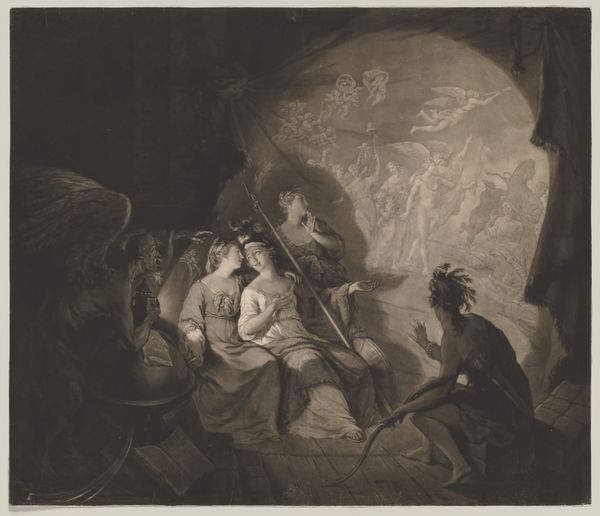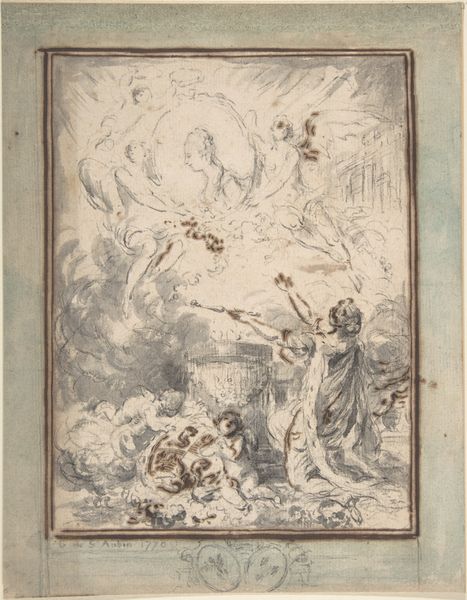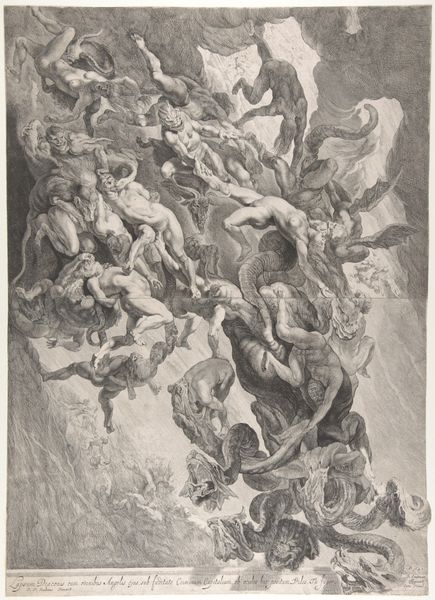
Copyright: Public domain
Curator: Looking at Henry Fuseli’s “The Shepherd’s Dream,” made in 1786 using charcoal, the immediate feeling I get is one of disquiet, perhaps even terror, thinly veiled by the lightness of the medium. The floating figures feel ominous despite their ethereal appearance. Editor: It is precisely this tension between form and subject that captivates. The formal elements – the dramatic chiaroscuro, the dynamic composition with figures spiraling through space – these amplify the emotional intensity typical of the late 18th-century fascination with the sublime. Curator: Absolutely. And how does Fuseli's piece function within a broader societal context? History paintings like this served to legitimize the cultural hegemony, offering a visual commentary, often morally didactic. This piece challenges it, in my opinion. Editor: Interesting point, yet this work presents a departure from traditional academic standards and social commentaries. Instead, Fuseli delved into the realm of imagination, giving form to interior states of consciousness. Think about how the contrast achieved in charcoal, along with lines both sharply defining form, and others fading into soft suggestion create the psychological experience. Curator: Fair, but the dreamscapes common in Romanticism reflect societal anxieties bubbling beneath the surface. Perhaps Fuseli’s shepherd is a stand-in for a population grappling with uncertain political and social change, in other words, the fears experienced by the social groups of this historical period. Editor: One cannot dismiss the symbolic vocabulary at play. The Shepherd himself, inert, representing a slumbering society perhaps. And surrounding him are the symbolic representations from the dream realm - fairies and spectral entities both angelic and demonic - suggesting the contradictory elements of dreams that both horrify and inspire. Curator: The placement and poses of those dream figures...disturbing! And despite the title, what dream should feature nightmares in place of pleasant visions of sunny pastures and sheep? Perhaps it mirrors societal anxieties regarding control and the rational Enlightenment thought that dominated the intellectual community at the time. Editor: And now, having teased apart its various elements, this seemingly fantastical charcoal drawing on paper allows one to engage with psychological dimensions and even the collective experience that is often associated with such liminal states as that of a dream. Curator: Indeed, through analyzing its historical roots to its technical nuances, "The Shepherd's Dream" really exemplifies a turning point for our culture.
Comments
No comments
Be the first to comment and join the conversation on the ultimate creative platform.
